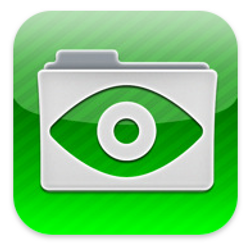- Educational Choice: McCroy describes his version of choice as: 1) Choice between a college ready diploma and a career ready diploma, 2) Expanding virtual classes for public, private and homeschooled students, 3) Streamlining the charter school approval process so that its faster.
- Use tests to determine whether 3rd graders should be promoted and a proficiency test for all ninth graders: McCroy would use the results of tests third graders take to determine whether they would be promoted to fourth grade or not. He would also implement some kind of proficiency test in reading and mathematics for ninth graders. Those not passing would take remedial courses, but he does not say that they would not be promoted.
- Merit Pay for teachers: McCroy would change the pay system for teachers in North Carolina to “reward teachers for the job they do instead of the number of years they teach.”
- Grading Schools: McCroy would use what he calls “unbiased,objective exams” in reading and mathematics to grade schools. Schools would be graded for both proficiency and growth according to McCroy’s plans. In his school grading scheme, half of a school’s grade would be based on proficiency levels, and the other half would be based on growth.
- It lacks any specificity at all. It isn’t a plan at all. It is at best a policy statement. I would shudder to think that anyone can reduce their plans for education reform to only three pages. That indicates either a superficial, incomplete understanding of the troubles facing public schools in North Carolina, or it indicates an acceptance of a boilerplate reform plan from special interests and political parties.
- McCroy’s plan relies on measures that have been tried and failed or that fly in the face of research. North Carolina has tried to stop social promotion before and discovered that they just didn’t want to base a student’s future on the results of one test of dubious reliability and validity. Placing such weight on state testing also violates the state’s testing code of ethics. Also, North Carolina has tried the old high school proficiency test idea for many years with the old competency tests high schoolers had to take and pass to graduate. That ended because it wasn’t working. North Carolina even tried a form of merit pay by giving teachers bonuses based on test scores, but our politicians canned that when budget times got tight. Then there’s the research cited by authors like Daniel Pink and Dan Ariely that point out how futile merit pay is any way. Grading schools was tried under No Child Left Behind, and we all know how successful that’s been for the past decade.
- It follows the standard boilerplate Republican platform that ultimately seeks to privatize public education. One thing you can’t accuse McCroy of is straying from his Republican handlers. But because of that, his entire education plan is a “status quo” plan. There’s not an ounce of originality or thought put into it. It is more about furthering a political agenda than genuinely reforming schools. If it were, there would be innovative and thoughtful ideas in it, not a rehashing of what Republican governors are doing around the country already.
- McCroy’s plan is still caught in 19th and 20th century education models. He is still hung up on classifying students by superficial grade levels, and by using “tests” to determine the “defectiveness” of products (students). Those not making the grade are recycled back through the process again. This plan still at its core believes you can grade and classify students by groups. It sees a system of education that pushes students through like factory parts.
- McCroy’s plan keeps the faith in the power of standardized tests to accurately and infallibly measure the progress of students. McCroy’s thinking about assessment is still caught in the 19th and 20th century model of assessment. He would take our state back to bubble sheets that determine the individual fates of students, in spite of the fact that we’ve had a decade of that under No Child Left Behind and it hasn’t worked. The “unbiased, objective exams he calls for are the tools of schools that are test-prep factories, not schools that are educating students for the 21st century.
- McCroy leaves a lot of things unsaid in his education plan. For example, how is he going to pay for merit pay schemes when our state has been unable to give anyone a raise in four years? I know he says they’ll look for places to trim in order to pay for it, but he forgets our budgets have been cut for the last few years. He also says nothing of school vouchers, which I know he supports. When politician presents a plan for something that is so vague and unspecific, you can’t help but wonder what he is hiding.
You have read this article 21st century education /
McCroy Education Plan /
North Carolina Education /
North Carolina Education Policy /
Pat McCroy /
Pat McCroy for North Carolina Governor
with the title March 2012. You can bookmark this page URL http://serres-media.blogspot.com/2012/03/nc-gubernatorial-candidate-pat-mccroys.html. Thanks!











